Design Thinking
Some people are using design thinking as a methodology that helps people develop the technology into products that are more acceptable to the public. It involves creating prototypes of the product and testing with consumers as a basis for continuous improvement and for their acceptance. For example, Airbnb's founders spent nights at the homes of their first users to test the suitability of their product, etc
Pretotyping
It is linked with design thinking and is an inexpensive approach to product testing that lets a business decide whether it should build something instead of whether it can)
"...mission is to find the least amount of process, tools and techniques to figure out what we should and shouldn't be building. The problem isn't ideas. The problem is out of the abundance of ideas, how do you test as many as possible as fast as possible to find the ones most likely to have legs, rather than guessing. At the moment we have 100 ideas, we stand at the whiteboard and vote on gut feel. That's broken immediately because we are the worst possible judge of what good and bad look like - because we are not the customer..."
Lesley Barry as quoted by Beverley Head 2019
It often involves creating a digital simulation of what the final result might look like, ie presenting it as if real, then seeing if customers are interested. It is a great way of culling ideas quickly, leaving the most worthwhile for further investigation, eg one business set up a chat bot and interacted with around 30 customers to gauge their reaction; within 8 minutes, they knew they were wrong!!!!!
"...The beauty of digital platforms is that it provides immediate feedback - data driven innovation. the iterative process we have here means that we can leverage data insights. When you are running lots of experiments, you've got a few variables. Running a lot of experiments more frequently means that you can optimise each market and eventually the quality experience..."
Val Brown as quoted by Beverley Head 2019
Some techniques used include
- interaction and connect with the customer (most important)
- virtual simulations like 3-D printed mock-ups of products or digital technologies
- product discovery sessions
- face-to-face interviews
- diary studies
- eye tracking new online platforms, etc
NB One in 7 products is successful in the market place and 30% of products fail at launch (Beverley Head 2019).
One of the reasons for using these techniques is to manage risk
"...If you are being truly innovative and creating something that really hasn't existed before, you don't know how people are going to respond to it, you don't know if it's going to work in the way you expect it to work. Every prototype we're built, we have been able to gain some really valuable feedback which has informed the next step..."
Sandy Walker as quoted by Beverley Head 2019
To handle challenges like globalisation, digital disruption and unprecedented pace of innovation, we need to change the mindset from being risk averse, ie we have to protect what we have and only move when we are threatened to
"...How can we get as much as we can and move as fast as we can in the market......and can respond rapidly to competition..."
Val Brown as quoted by Beverley Head 2019
"...The technology is born from innovation and testing......everything starts with the customer. It's about understanding the requirements of the customer, features that are going to be really valuable, then how would we test that. How do we prove we have met what the customer needs - and we do that even before we design..."
David Haley as quoted by Beverley Head 2019
More on Design Thinking
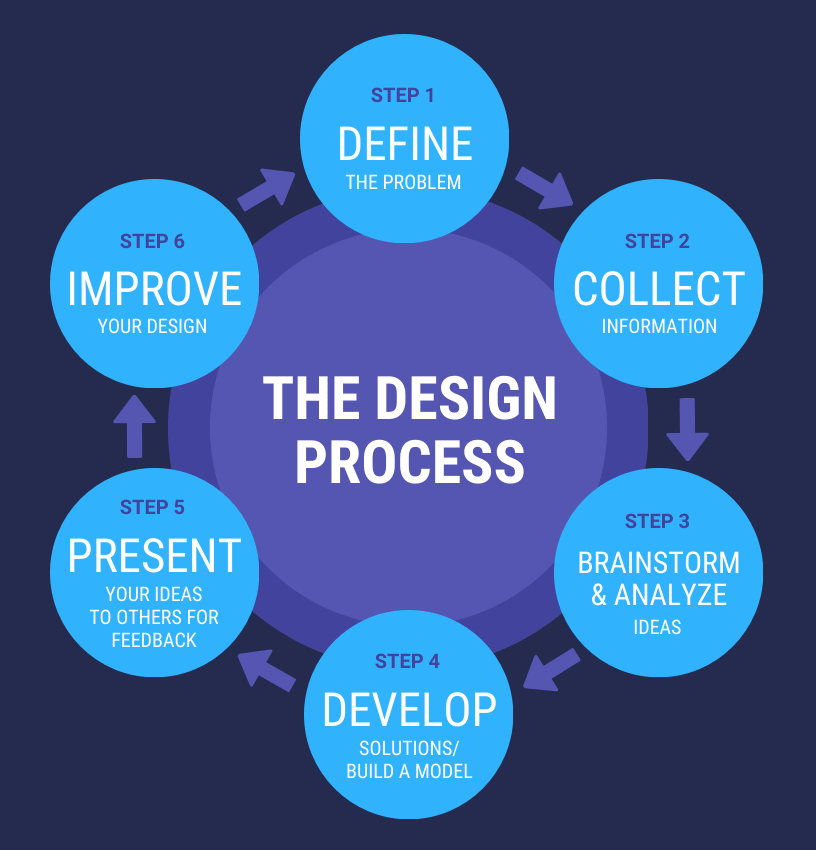
(source: https://venngage.com/templates)
Design Process

(source: https://venngage.com/templates)
Design Thinking
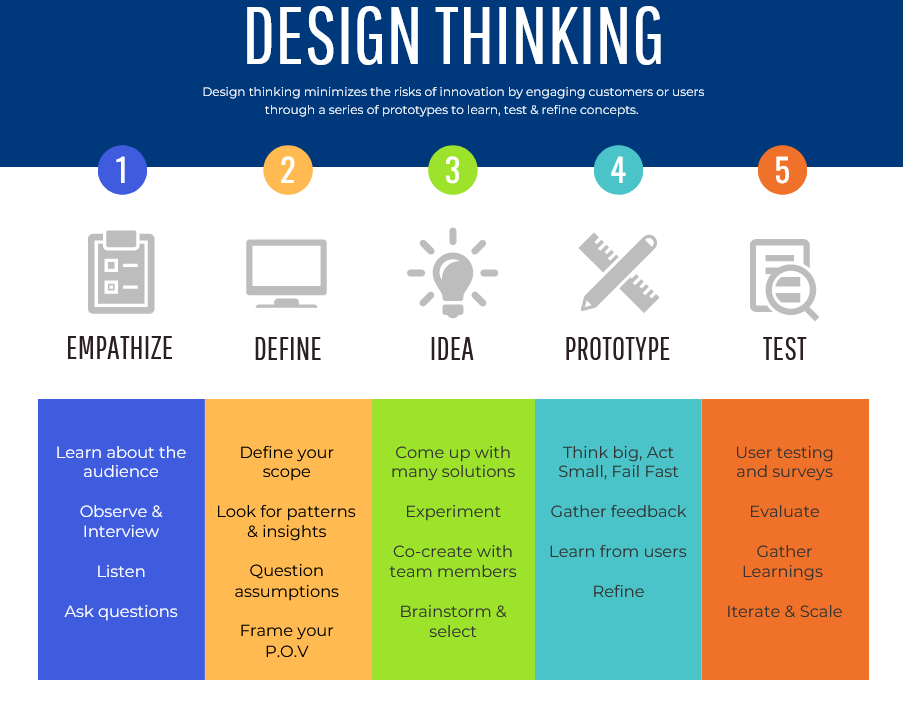
(source: https://infograph.venngage.com)
Design Thinking Process
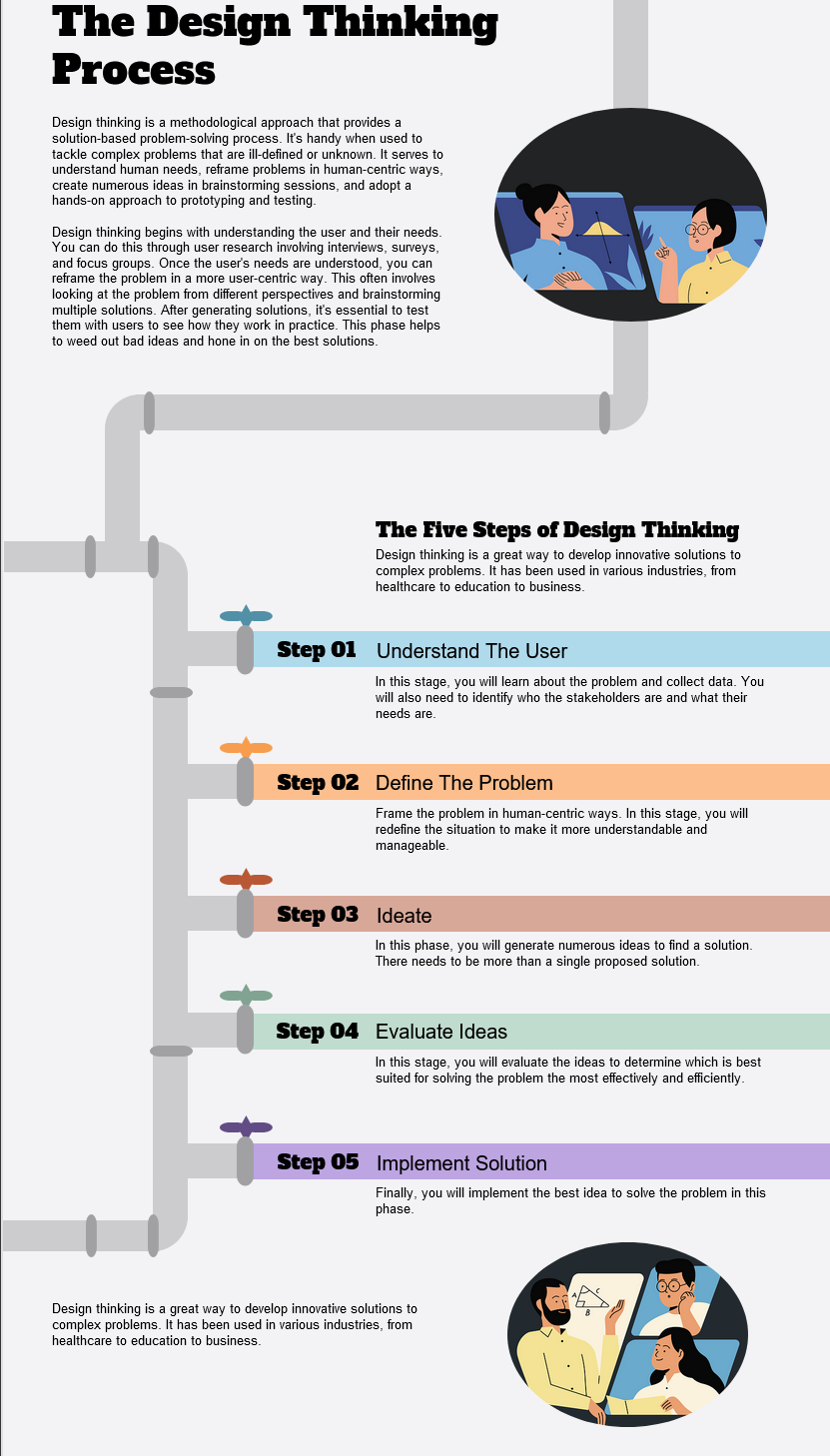
(source: https://infograph.venngage.com)
Principles of Design
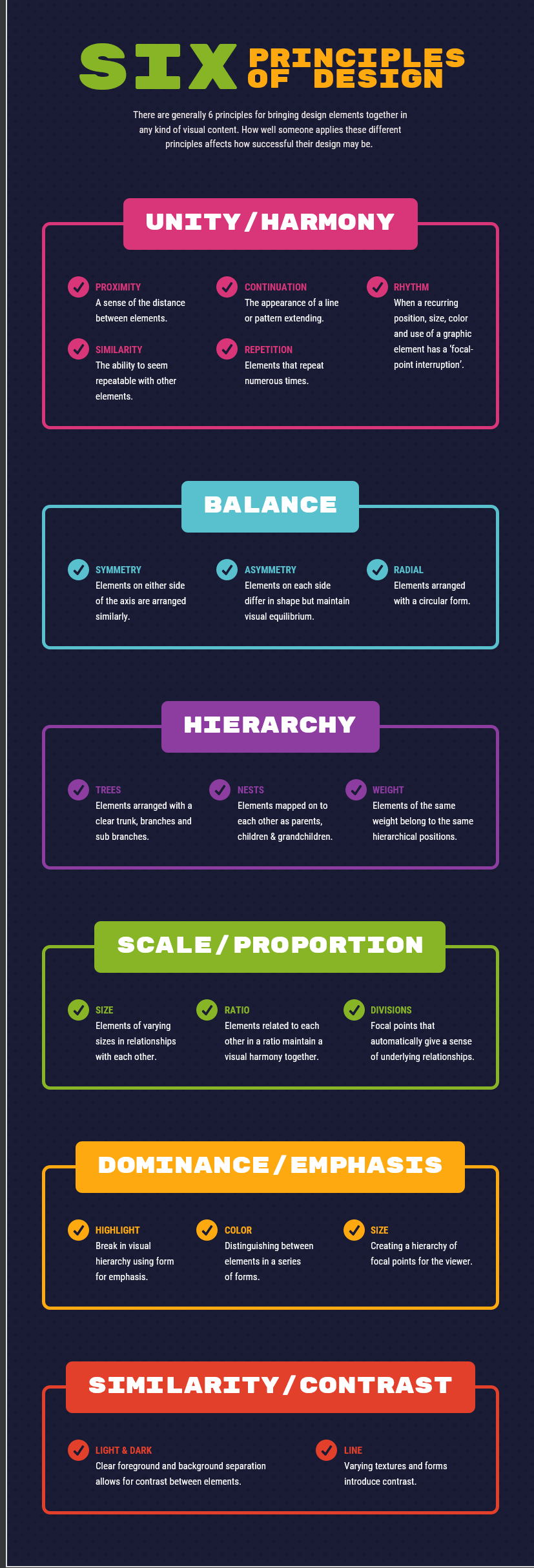
(source: https://infograph.venngage.com)
Steps in Product Design
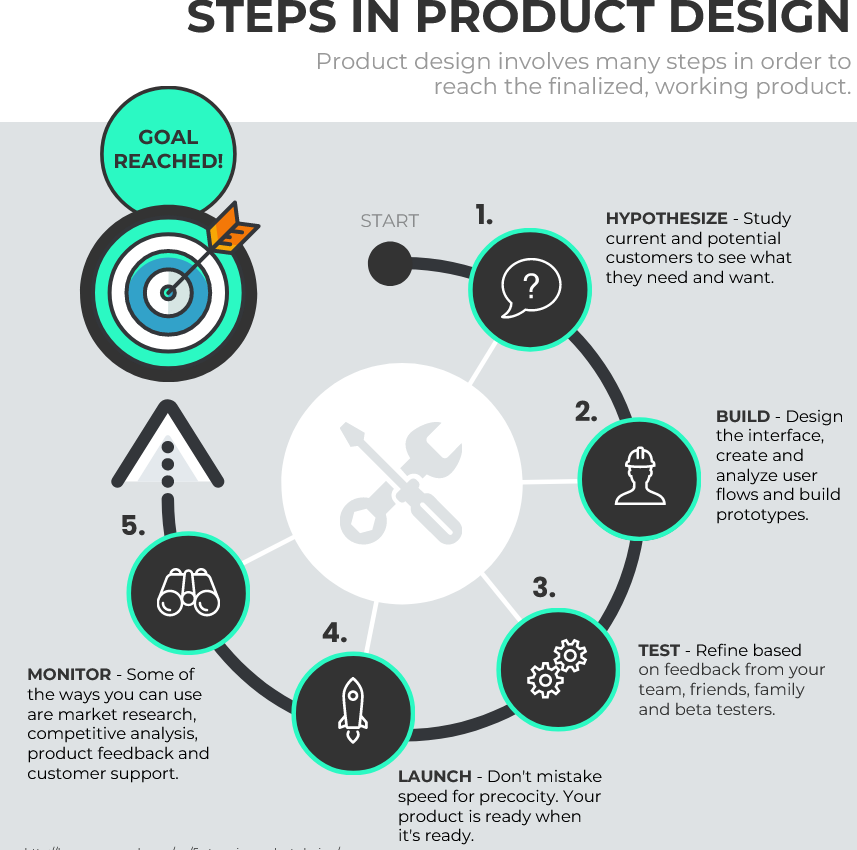
(source: https://infograph.venngage.com)
